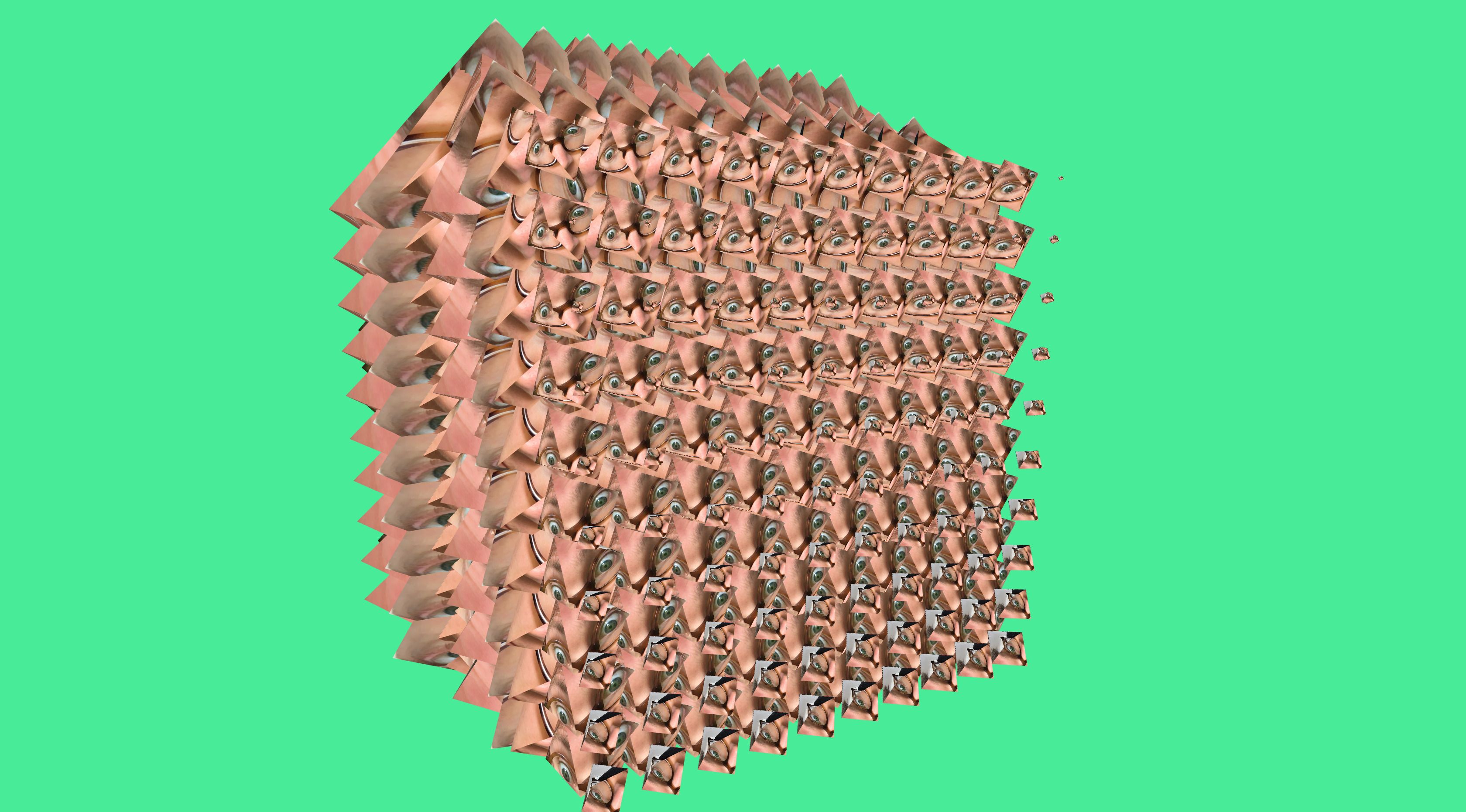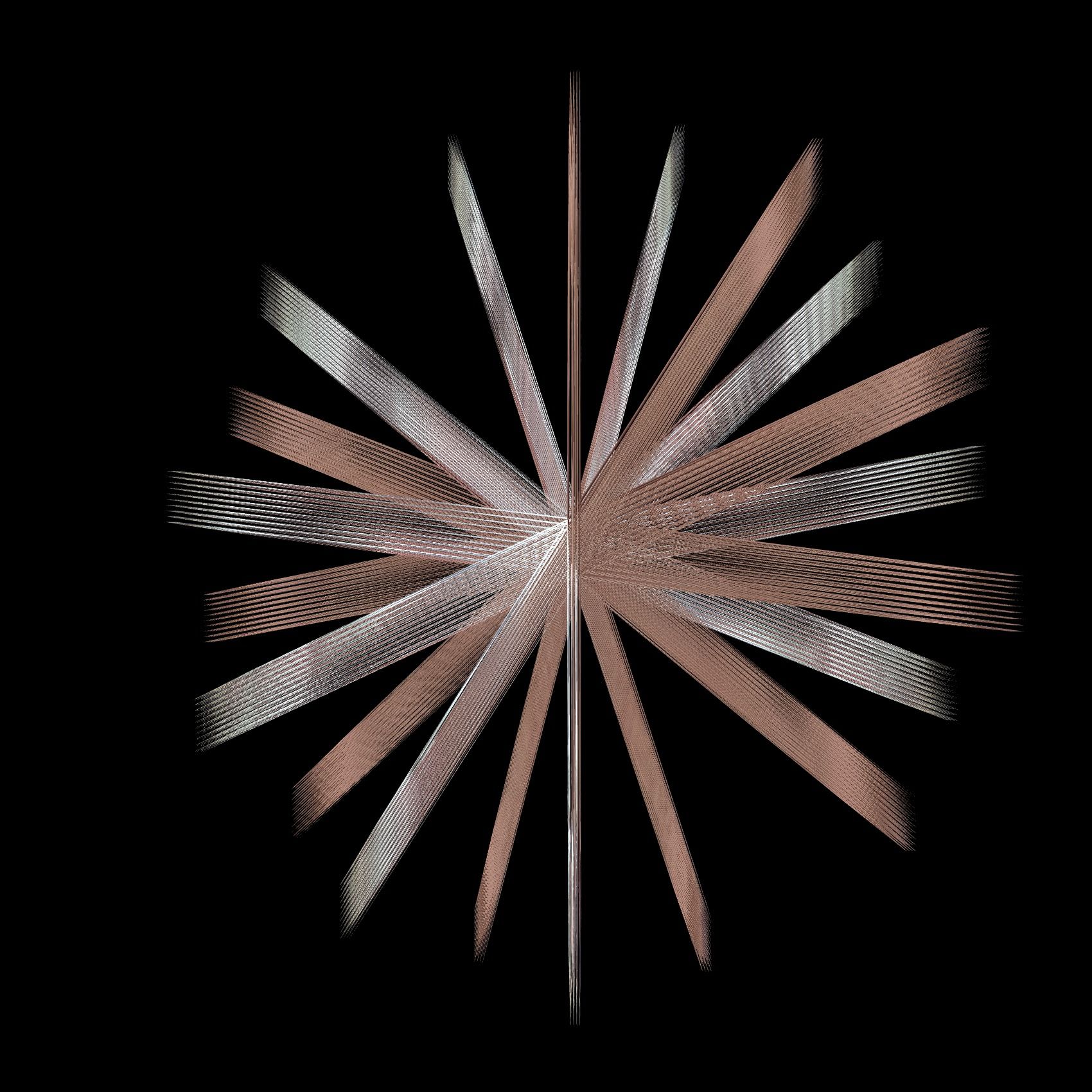Hypercam
Hypercam enacts a gesture of visual resistance to the squared-off talking heads that we have all become; it converts the interface flatland into a multidimensional space of play.- Time
- –

During the first months of 2020, human relationships turned virtual. Once a bounded practice, a backup for otherwise face-to-face encounters, video conferencing became the normative mode of interaction for work meetings, friendships, education, love relationships and family gatherings on both the local and global scales. Hypercam enacts a gesture of visual resistance to the squared-off talking heads that we have all become; it converts the interface flatland into a multidimensional space of play.
If shooting1 characterized the past decade of internet culture, from selfies to Instagram, streaming has emerged as the protagonist of 2020s quarantine culture: a moment characterized not by the drive “to save the moment for later” but instead by spatially dislocated but “live” connections (as inflected by network latencies). With half of the global population in lockdown,2 concerns about surveillance capitalism3 in the age of streaming have been momentarily pushed to one side. In 1980 Paul Virilio predicted that “vision of light moving on a screen would have replaced all personal movement.”4 Forty years later, interfaces have become our new reality: the virtual as the “real but not actual, ideal but not abstract”5 takes over. This shift is exemplified by Virtual Zoom backgrounds in which we inhabit ideal, but not actual, spaces each in a self-selected isolation chamber, one box in an array of talking boxes as great or small as the available bandwidth can supply. The “stream” is literally nowhere but, nonetheless, it is experienced as real. As we interact with it, we imagine ourselves inhabiting the stream.6 The materiality of the interface is distributed on the level of planetary-scale computation.7 Networked interface streams define the hyperreality of quarantine culture, the psychogeographies of isolation, a model of society founded upon a networked asociality (#AloneTogether). Hypercam breaks the normative frame of video conferencing, prying the image apart to expose its viscera–what is being stitched into the “real,” what is being lost in the mediation of video signal transmission–as well as its metamorphic potential.7, 9 It confronts and questions the textures of the network, the negativity of the medium,10 offering ludic expansions and extensions of the talking heads we have all become.
- Susan Sontag, On Photography, 1977
- NYTimes, April 3, 2020
- Shoshana Zuboff, Surveillance Capitalism, 2019
- Virilio, Aesthetics of Disappearance, 1991
- Marcel Proust, In Search of Lost Time, 1913
- Gilles Deleuze, Félix Guattari, A Thousand Plateaus, 1980
- Benjamin H. Bratton, The Stack, 2016
- Manyu Jiang, The reason Zoom calls drain your energy, BBC, 2020
- Kate Murphy, Why Zoom Is Terrible, NYTimes, 2020
- Dieter Mersch, Mediale Paradoxa, 2006



